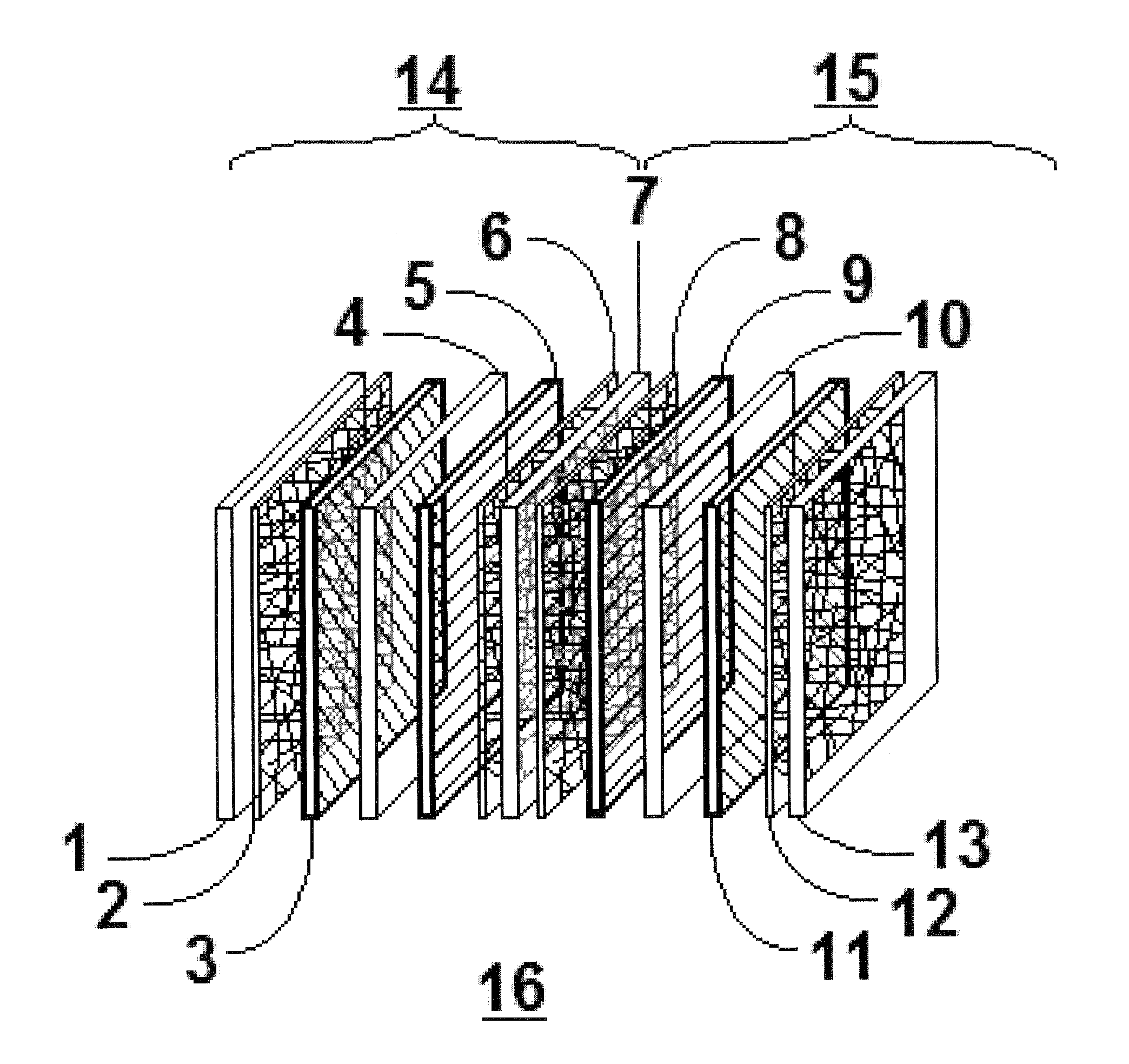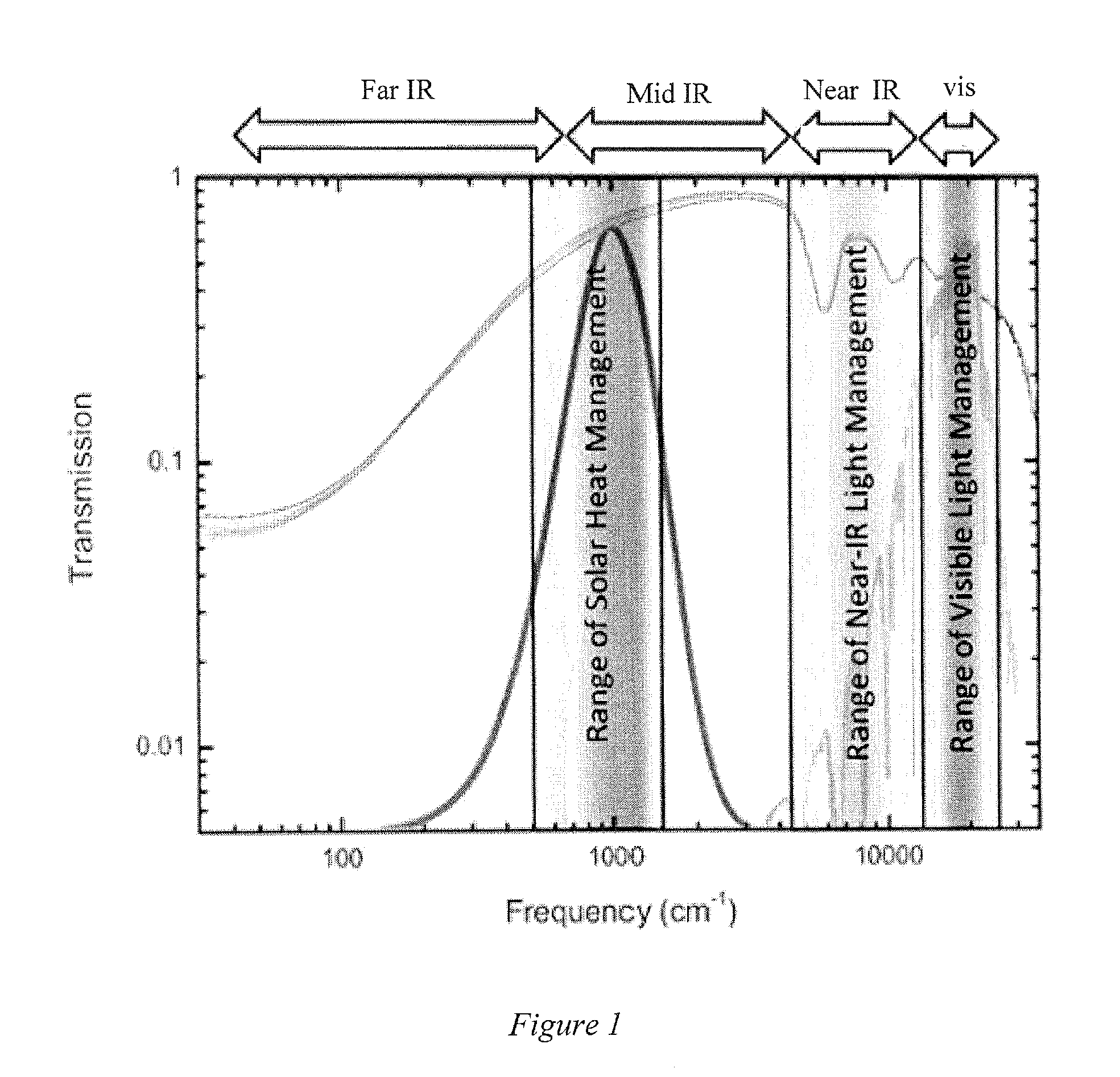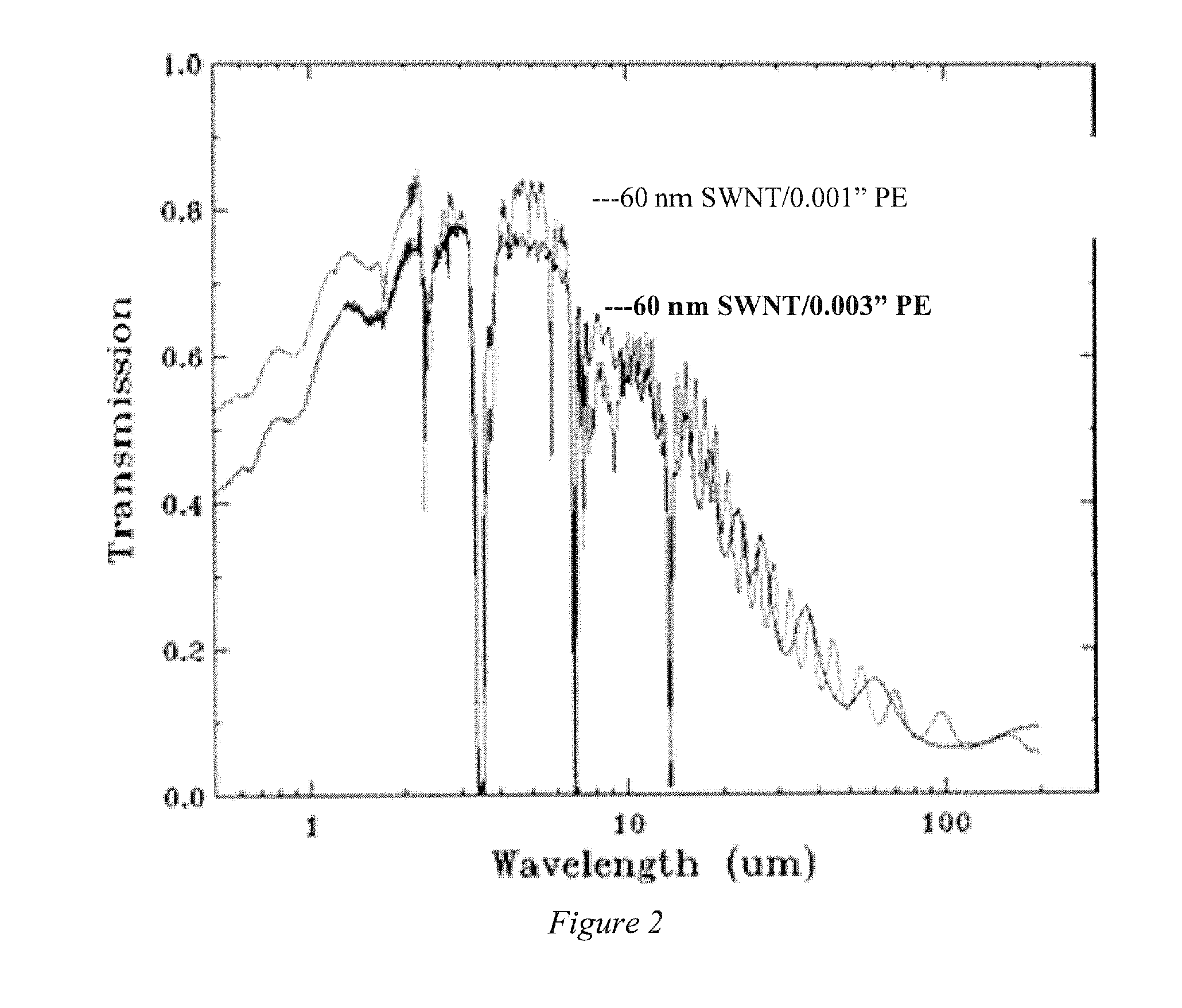Mulitple controlled electrochromic devices for visible and ir modulation
a technology of electrochromic devices and ir modulation, which is applied in the direction of photometry using electric radiation detectors, optical radiation measurement, instruments, etc., can solve the problems of reducing aesthetics and other benefits, increasing cooling or heating costs, and requiring the removal or covering of windows to increase lighting costs
- Summary
- Abstract
- Description
- Claims
- Application Information
AI Technical Summary
Benefits of technology
Problems solved by technology
Method used
Image
Examples
Embodiment Construction
[0015]Embodiments of the invention are directed to electrochromic devices (ECDs) allowing control of IR absorbance or reflection independently of visible light or simultaneously with the visible modulation. The device can be free-standing or can be a laminate that can be attached to a surface of another device. For example, in one embodiment of the invention, the substrate upon which an ECD is deposited can be a glass or a plastic that constitutes the majority of the mass of an existing window. Single walled nanotube (SWNT) films have been developed for applications as transparent conductors, as disclosed in U.S. Pat. No. 7,261,852, which is incorporated herein by reference. FIG. 1 shows the transmittance spectrum of a free-standing 150 nm thick film of SWNTs ranging from the far IR to the UV. A majority of solar heating results from absorbed solar radiation in the 400 to 1250 cm−(8-25 micron) region as indicated in FIG. 1. A relatively thick SWNT film exhibits 50 to 80% transmittan...
PUM
 Login to View More
Login to View More Abstract
Description
Claims
Application Information
 Login to View More
Login to View More - R&D
- Intellectual Property
- Life Sciences
- Materials
- Tech Scout
- Unparalleled Data Quality
- Higher Quality Content
- 60% Fewer Hallucinations
Browse by: Latest US Patents, China's latest patents, Technical Efficacy Thesaurus, Application Domain, Technology Topic, Popular Technical Reports.
© 2025 PatSnap. All rights reserved.Legal|Privacy policy|Modern Slavery Act Transparency Statement|Sitemap|About US| Contact US: help@patsnap.com



